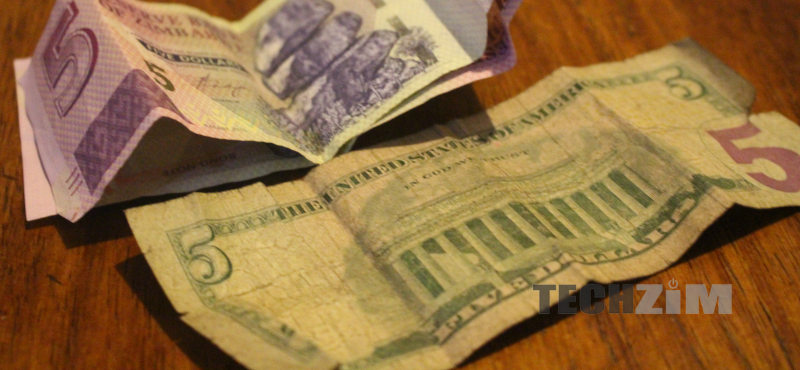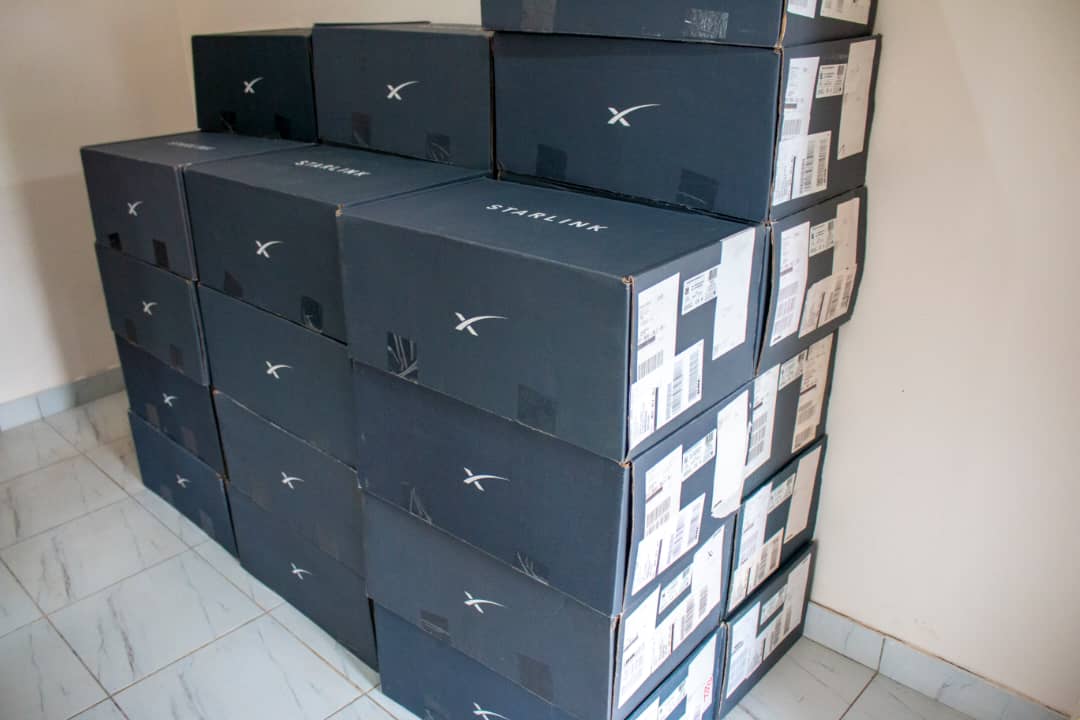Like it or not, the United States of America wields a lot of power and influence over countries like our Zimbabwe. In Zim’s case, it’s even worse as the USD is the preferred currency within our borders.
Technically we still use a multicurrency system but there is only one currency anyone wants, the USD. Our own Zimdollar exists but has been steadily depreciating over the years and so demand for it is near non-existent.
This is not an ideal situation because it leaves us a little more vulnerable to the ‘movings and shakings’ of the USD than the rest of the world. A foreign currency should not have this much power in our economy.
That’s compounded by the fact that reliance on a foreign currency robs us of our own monetary policies. Granted, most Zimbabweans find it hard to trust the government’s monetary policies hence the USD preference.
Yes, a good number of us want the USD to be the sole official currency precisely because it means we won’t have to contend with the Zimbabwean central bank’s monetary policies.
However, there is merit in the argument that the sole use of the USD a few years back was responsible for the deflation we experienced. The economy shrunk and prices actually decreased at times.
That was bad but as a country we experienced the second worst hyperinflation in history and are currently experiencing a milder hyperinflation. Meaning the average citizen would take deflation over the hyperinflation our government seems to always lead us to.
The best and worst of both worlds
For all the good it has done, to be honest, the multicurrency system kinda sucks too. No wonder we tried to abolish it completely, only to mess up our policies leading to Zimdollar collapse and the resurgent use of the USD in the economy. So, we compromised and now mainly use 2 currencies, the Zimdollar and the USD.
Why we still have the multicurrency system
Rosily put,
“The United States dollar is performing the role of a savings and investment currency while Zimbabwean dollar is performing more the role of a transactional currency rather than an investment currency.”
Zim finance minister
Should we manage this right, we could navigate safely until the conditions are right to have a local currency that fulfils both roles sufficiently.
The multicurrency regime should reduce the RBZ’s capacity to print money but we saw how within just a few years of the reintroduction of the Zimdollar, the printers had already gone brrr. Now, the RBZ is trying to mop up the excess local currency in the market that’s driving up inflation.
As we figure that out, the USD works as the fallback that allows for savings and investments. The Zimdollar’s depreciation is still wreaking havoc but the USD is providing a little comfort. The hybrid dual currency system therefore has it’s advantages.
The Zimdollar-less multicurrency regime worked to completely remove the RBZ’s capacity to print money and broaden the monetary supply. Thus it led to economic stability by enforcing fiscal discipline and removing the RBZ’s discretionary monetary policy decision making power. Gone were expansionary fiscal policies and the printing of money to finance fiscal expenditures.
However, that’s just a history lesson at this point because apparently we are never going back to a Zimdollar-less multicurrency regime.
Where the multi (dual) currency falls short
The Zimdollar part of the dual currency regime is the weak link. Zimbabwe just wasn’t ready for a new local currency. The fundamentals were not in place and so we rushed to reintroduce it. So, as the economy has partially redollarised, those without access to the now especially demanded USD suffer.
Millions of Zimbabweans still earn in Zimdollar whilst most of their expenses are only payable in the USD. They have to obtain the USD to pay for essentials like rentals on the black market. As a result most are struggling to make ends meet.
On the producers’ side, the fact that the Zimdollar is only usable within Zimbabwe means there will always be a demand for foreign currency that can’t be met. We just don’t produce as much as we need and so we still have to import quite a lot, especially when it comes to inputs.
Manufacturers/producers can’t demand payment in USD only and so the RBZ’s auction with its deficiencies becomes the only source. The hurdles we have to jump because of the dual currency system.
It doesn’t help that our biggest trading partner remains South Africa whose official currency is not the USD. So movements in the USD/Rand exchange rate affect our inflation rate and competitiveness. We have no control over both those currencies and so we find oursleves in an unenviable position.
The performance of two currencies that we have zero control over significantly affects our economy. That sucks.
USD set for major movement
The USD is of course the American currency and so they are in control of the monetary policies that affect it. The USD has not been doing well in the past couple of years.
The Americans have been doing a good impression of Zimbabwe and have been printing money like there is no tomorrow. As a result, inflation in the US is at its highest in over 40 years.
The inflation is not as bad as it would have been had the USD not been the reserve currency of the world. As much as 65% of printed USD’s are outside their country. This helps them export their inflation out. However, their money printers went brrr just a little too hard and so inflation has crept up within their borders.
What they are planning to do to rectify this will have an impact on the global economy, even more significant in countries like Zimbabwe especially.
US interest rates to rise
The raising of interest rates by the US will lead to capital outflows and further Zimdollar depreciation in Zimbabwe. High interest rates promote saving and some of our would-be investors may shun the risky Zim market and settle for the higher interest their capital would earn just sitting in a bank in the US. Those who borrow to invest in Zim will be less likely to take out loans at the higher interest rates.
Then there is the issue of USD denominated obligations. We have looked at how Zim companies have USD liabilities and so the higher interest rates means an increased financial burden for some.
Zim companies already had high foreign exchange exposure and the Zim govt already had high USD denominated debt. So, servicing our over US$10 billion debt is going to be more expensive. The International Monetary Fund (IMF) urges countries with such USD debt as ours to hedge their exposures if possible.
In the past, US interest rate increases have led to financial crises in emerging markets. Therefore the IMF has warned emerging economies like ours to brace for the same this year. Came the forewarning,
Emerging economies should prepare for potential bouts of economic turbulence.
IMF
That’s what we get
The USD has been a godsend in Zimbabwe but we always knew that came with risks. Are we about to pay for our dependence on a currency we have no control over?
We’ll probably feel the pinch but no Zimbo would endorse sole adoption of the Zimdollar to reduce this risk. That is because, as ridiculous as it sounds, most of us actually think the Zimdollar poses a bigger risk to our economy’s health.
So we gotta take the good with the bad and weather whatever storm Joe Biden and gang have in store for us.














Comments
27 responses
Those with USD will hang on like grim death to them! The latsest Zim “currency” will rapidly sink back into the murky depths, probably within 6 months, as the printing press goes into overdrive yet again…
The Zimdollar was dying its own slow death and did not need external pressure. It’s going to tank. Those without access to the USD will suffer as the exchange rate goes beserk. Maybe our RBZ will surprise us and plan accordingly for this cause we have a little time to respond.
Thank you Mr sengere for ruining my year with such horrible news. What a nice way to tell somebody “you are f@#$ked”
I know, it sucks that this news is coming out as we start a new year.
Haibo
Haibo indeed.
Zimbabwe now needs an Austrian Economics Central Banker not these D rated failed Keynesian economists.
The Zim situation seems a little too complicated for the guys we have to remedy. I guess trying to balance the politics with the economics makes it that much harder. I doubt anyone could succeed when shackled like this. But the Hungarians had a worse hyperinflation situation and so the Austrian/Hungarian branch of econs might do the trick.
Very informative thank you
Glad you found it informative.
Very informative thank you
Thank you for reading.
This very insightful and informative. Keynesian economics have operational challenges in economic environments like Zimbabwe.
I wonder why we have not tried anything different, even post-Keynesian. I wonder though, how much of the failure is down to the drawbacks of Keynesian econs and how much down to the politics/economics marriage.
“So movements in the USD/Rand exchange rate affect our inflation rate…..”. Care to explain this one. What’s the link between the USD/ZAR rate and our inflation?
We import mostly from South Africa. So when the currency we use (the USD) appreciates/depreciates against the Rand, this affects its purchasing power in SA. For example, if the Rand appreciates against the USD, that means our USDs will be able to purchase less in SA. In effect, it’s as good as Zim importers were charged more. So when the goods get to Zim, the prices they sell at will have to factor in the higher cost, therefore increased prices here. At the same time our exports to SA would become more competitive as they become cheaper for South Africans.
That’s how the USD/Rand exchange rate affects our inflation rate in Zimbabwe.
We have more USD than RTGS.So the value of our USD wii actually rise. Which is good.
Our exporters will feel the burn as our goods become expensive thanks to the stronger USD. Lower exports = lower forex inflows = bad.
Zimbos earning in Zimdollar – civil servants etc – will struggle. Caue remember, the Zimdollar is here to stay and it looks set to lose ground against the USD.
So, on the whole the benefits seem to be outweighed by the disadvantages for our economy.
A situation where we have more USD than Rtgs in the market doesn’t increase USD value. (Infact it depreciates the USD)..and then if USD appreciates its not even good for the economy since our exports become expensive..and imports rise since importing becomes cheaper.
Well it’s not always that when the interest rates in US rise so the spiral is to follow in other economies since each economy is regulated differently. An ordinary Zimbabwean with his USDs gets more value for his cash in actual value when interests rise in US. Though your country should adopt a system that makes your economy to be driven by the local currency. In Uganda we largely use the local currency though to a great extent big stocks and international business is done in USD.
I agree that there are times when emerging markets managed to nullify effects of USD interest hikes. Problem is that Zimbabweans extensively use the USD instead of a fast depreciating local currency. The interest rate hike will knock our local currency down another peg.
Then, for a country with foreign currency shortages, the fact that our exports, for which we demand the USD, will be affected by the USD strengthening is worrying.
We have tried adopting the local currency as the sole currency but trust issues and dubious monetary policies have made sure the experiment failed.
Thank you very much for this educative article Master Sengere. I think for first time I now understand how Zimbabwe is going down the drain due to use of the USD and it appears the politics of the day will not be able to solve the problem.
That’s what is frustrating about Zimbabwe. We know that the USD is not ideal for our economy to thrive but we messed up so badly with the Zimdollar that it is worse. So the masses end up preferring the USD which makes our exports expensive and encourages importing. Leading to forex shortages then inability to import essentials, then recession and deflation like we experienced before the bond notes came along.
To be honest, I agree with you that the problem is not likely to be solved any time soon.
hahaha , Zimbabwe is going down the drain due to zanu pf , thats the truth !
Lots of people put forward the idea that USD use, is hurting our exports, but i have always been curious, what are we exporting? From what i know Zim economy is dominated by mining and agriculture. A good chunk of our exports are raw and are priced according to international market prices, which in turn are usually denominated in USD, its these USD earnings that RBZ commandeers to finance that forex auction nonsense. My question still stands. What are we exporting in significant volumes that would benefit from being priced in a weaker currency? Also which exporter prices their goods based on any Zim dollar exchange rate?
My second point relates to notion that USD will appreciate. I donot think its that simple, in fact an argument can be made for the opposite actually happpening. The main cause of this will be that huge debt burden on the US government, it is in the trillions of dollars and for some time Americans have a had the luxury of paying relatively little to finance it. How long can this continue? Some believe interest rate rise is a warning sign of impending doom for the USD.
This is the Zimbabwean economy. Being bookish about it does not help. All bookish economics is a nullity. Imported inflation, interest rates etc bla blaa hazvishande. Apa maUSA acho jahwi muno. See no one knows how much US$ is in Zim.
Those wth power dont have ideas and those wth ideas dnt have power thats our catch22 scenario in Zim….